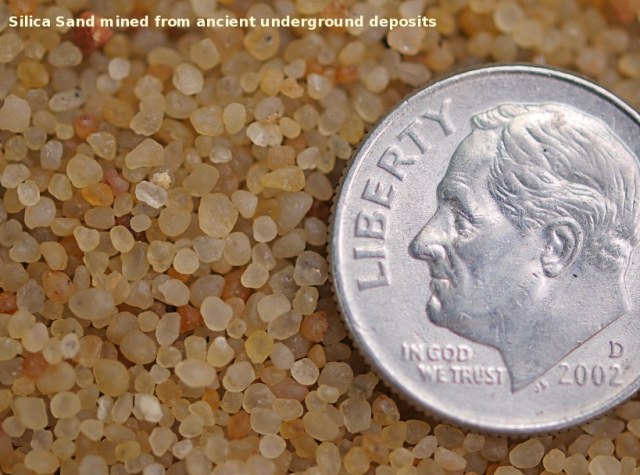QuestionI have been looking all over for Silica sand, Lowes does not have it, Home depot caries it, but with other additives mixed in. I found a site on line, The Betty Mills Co. that sells silica sand, they say for use in urns , is this ok to use for insectivorous plants, or do you have a site where I can buy the correct Silica Sand !!
Thank's, Ken
Answer
 Silica Sand
Silica Sand
Silica sand is sometimes hard to identify and locate. These notes may help.
IDENTIFYING SILICA SAND
Silica sand is sand almost all the grains of which are composed of just one compound, silicon dioxide, also known as quartz. Silica is the primary ingredient in glass, and silica sand can be identified by examining it very closely with a high powered magnifier (such as a 10X jewelers' or geologists' loupe; I use a Belomo brand loupe). If almost all the grains are translucent (allow light to pass through, semi or mostly transparent) then the sand is very probably silica sand. If too many of the grains are opaque, then it contains grains of different types of rock, many of which are soluble in water to some degree and can cause a mineral buildup in carnivorous plant soil that can damage and sometimes kill a Venus Flytrap or other carnivorous plant.
It is important to avoid river or beach sand, most of which contains a mixture of numerous types of rock, and try to find pure or almost pure silica sand instead, which is usually mined from large deposits that are thousands or millions of years old, or produced artificially by heating silicon dioxide (perhaps with a tiny bit of fluxing mineral to help it melt at a slightly lower temperature, and which will not harm carnivorous plants) until it melts into a glasslike substance, and then shattering that glass into small particles. This artificial silica sand will be labeled as pure silica and can be identified by three characteristics: the grains are clear or almost clear (not "frosted" in appearance like the natural mined silica sand), will be of a uniform color (usually no color at all) and will have somewhat sharp points and edges. Natural silica sand has some color variation (different colors of lighter or darker tan, for example) looks frosted from natural scratches to the surface of the grains, and the grains have a more rounded appearance from wear over time. (Attached is a photo of some of the natural, mined silica sand that I use).
Both natural and artificial silica sand are fine to use in carnivorous plant growing mediums. To be avoided are "Sandbox sand," "Play sand," and some masonry sand that looks like a mixture of translucent and opaque grains, which is probably from a river, beach or other surface deposit and contains many grains that are not silica.
LOCATING SILICA SAND
Silica sand is used for many industrial and some artistic purposes. Sometimes it is available at home and garden stores or at lumberyards and building materials merchants. It is often used for sandblasting in auto and auto-body repair businesses. It is used for sandblasting of glass for decorative effects, and therefore by some businesses specializing in glass, stained glass or sign making.
Silica sand is also sometimes sold in 50 or 100 pound bags as a masonry cement ingredient, but one must be careful to examine the sand itself because sometimes it is riverbed or other non-silica sand instead.
Sometimes silica sand is sold as pool filter sand, or sand for reptile terrariums. The latter is likely to be expensive and sold only in small batches, whereas the cheapest price for silica sand would be for larger bags of the sand.
You may have to call some local businesses that you think might use sandblasting and ask where they obtain their blasting sand, or if you might be able to buy a bag from them or add a bag to their next purchase. A university's art department may have some silica sand or know where to obtain it. Local glass and craftsmen-type businesses may use or know where to get it.
Often, a little creative thought is required to lead you in the right direction to locate silica sand somewhere fairly near your location. I hope these comments will help you and others that are trying to identify and find silica sand.






